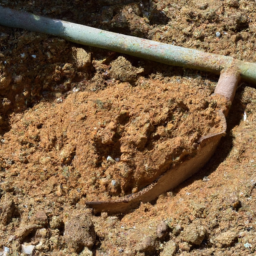Improving Sandy Soil Gardening Tips
How To Improve Sandy Soil For Gardening
How To Improve Sandy Soil For Gardening
What Is Sandy Soil?
Sandy soil is a type of soil made up of very small particles. It's created by weathering processes that break down rocks and other solid materials found in nature. The particles of sandy soil are primarily made up of quartz, feldspar, and mica. Sandy soil has low water and nutrient retention, making it difficult for plants to thrive.
Benefits Of Sandy Soil
Despite its low water and nutrient retention, sandy soil has some benefits. For starters, it is extremely well-draining, making it a desirable soil for plants that do not like standing water or overly wet soil conditions. Additionally, sandy soil warms up quickly in the springtime. Because of its high drainage abilities and quick warming, sandy soil is ideal for certain vegetable crops or plant varieties, such as potatoes, sweet corn, and peppers.
Improving Sandy Soil
Improving sandy soil for gardening requires increasing the organic matter content of your soil. There are several ways to do this, including composting. Composting not only adds organic matter to your soil, it also gives your soil additional nutrients, such as nitrogen, phosphorus, and potassium, that can help improve the fertility of your soil. Other methods for improving sandy soil include adding leaf mold or manure to your soil.
Mulching
Another way to improve sandy soil for gardening is to mulch your soil. Mulching your soil helps to retain moisture in the soil and protects your plants from temperature extremes. It also helps to suppress weed growth, reducing the need for herbicides and improving the overall health of your garden. You can mulch your sandy soil with organic materials such as compost, bark chips, or grass clippings.
Adding Legumes
Legumes are a great way to improve sandy soil for gardening because they are nitrogen-fixing plants. They have the remarkable ability to take nitrogen from the atmosphere and turn it into a form that can be absorbed by other plants. Legumes can be planted in sandy soil as cover crops and then turned into the ground to enrich the soil with nitrogen.
Soil Testing
Testing your soil is a great way to determine what type of soil you have and what nutrients it needs. Tests are relatively inexpensive and can be done at home with a soil testing kit or at a soil testing lab. Soil tests will provide you with important information on the soil type, pH, nutrient levels, and other characteristics of your soil.
Conclusion
Improving sandy soil for gardening requires some effort but can be done by adding organic matter, mulching, and planting legumes. Additionally, soil testing is a useful tool to help determine what type of soil you have and what nutrients it needs. With the right amendments and maintenance practices, you can create a productive and healthy garden in sandy soil.
Insights
Improving sandy soil for gardening is achievable through a combination of organic amendments, mulching, legume planting, and soil testing. By taking these steps, you can create a soil environment that is more conducive to garden plant growth and productivity.

Previous Page
Next Page
